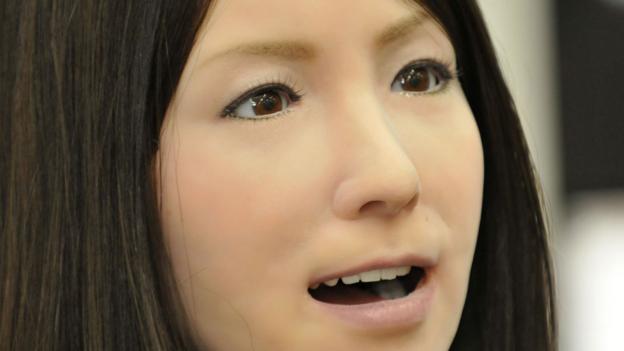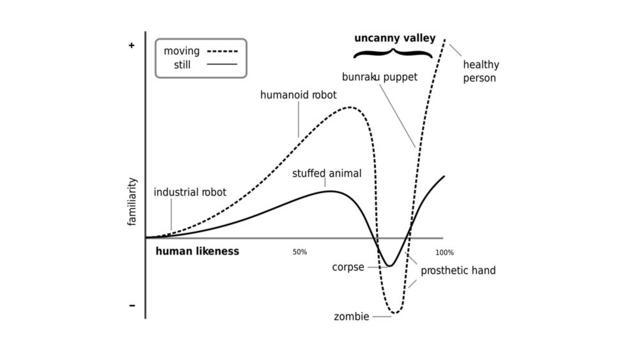Julius Skrrvin
I be winkin' through the scope
http://www.bbc.com/future/story/20130901-is-the-uncanny-valley-real/all
Mick Walters opens a door in his lab and points his computer’s camera towards the small, blurry, tan-coloured object he has just revealed. "This is Kaspar Two," he says. As the Skype connection catches up, an image of a robot in a baseball hat, a blue button-down shirt and striped socks appears. Kaspar Two is a robot child. He's not even on, just sitting slumped over. Even though the image is somewhat fuzzy, Kaspar Two is able to give me that feeling, that nagging sense of unease. "I must admit," says Walters, "when I first actually built Kaspar, I did think he was a bit uncanny."
Kaspar has been created at University of Hertfordshire, UK to help children with autism understand how to read emotions and engage with other people, but it falls into what's often called “the uncanny valley”. From humanoid robot heads to super-realistic prosthetic hands, the uncanny valley is where robots that give us the creeps live. It is the range between obvious cartoons and discernibly real people, where things look almost lifelike, and yet not quite believable. Peering into the uncanny valley is an uncomfortable experience. Its residents, like Kaspar, have a way of eliciting feelings of disgust, fear or dread.
For almost 30 years, the concept of the uncanny valley has acted as a golden rule for roboticists and animators. From Pixar to puppets, creating characters that are too lifelike was thought to be the kiss of death for any project. But now the concept itself is coming under scrutiny like never before. What exactly we are feeling and why we feel this way are questions that have finally found their way under the microscope. And some researchers are asking whether the uncanny valley exists at all.
What's in a name?
The first time many people encountered the concept of the uncanny valley was in 2001 with the movie Final Fantasy: The Spirits Within. Today, it is known as one of the first photorealistic computer animated films, but at the time not everyone was impressed. The groundbreaking graphics made many movie-goers uncomfortable, and the film flopped, losing Columbia Pictures $52 million. The faces were too human, too close to real life. "At first it's fun to watch the characters," film critic Peter Travers wrote in Rolling Stone. "But then you notice a coldness in the eyes, a mechanical quality in the movements."
A link between what is almost human and what is creepy was proposed long before Final Fantasy, however. The phrase “uncanny valley” is widely accepted to have originated in 1970, with the publication of an academic paper by roboticist Masahiro Mori in an obscure journal called Energy. Mori's original paper was in Japanese. Contrary to popular belief, his original title “Bukimi No Tani” only roughly translates into the phrase it has made famous. A more accurate translation is “valley of eeriness”.
This matters because it demonstrates the problem with the uncanny valley: it is an inherently woolly idea. When researchers try to study the phenomenon, they often have a hard time pinning down what an uncanny response actually looks like. The main graph in Mori’s paper has been mistranslated many times, leaving many people unsure what he really meant. Mori used the Japanese word “shinwakan” on the y-axis, a word that has no direct translation into English. The most common interpretation is “likeability”, but not all translators agree about that. Other suggestions include “familiarity”, “affinity”, and “comfort level”.
Perhaps the most surprising thing about the concept’s history, though, isn't the translation troubles, nor the debate over what is being represented on his graph, but how long it took for that debate to arise. Mori's paper didn't include any measurements. It was more an essay than a study. Yet, despite broad dissemination, the uncanny valley avoided scientific scrutiny until the early 2000's, when graphics and animatronics like Final Fantasy started giving people the creeps. As scientists started to explore Mori’s graph, they began to ask whether real data would reveal the same pattern.
Last edited:



